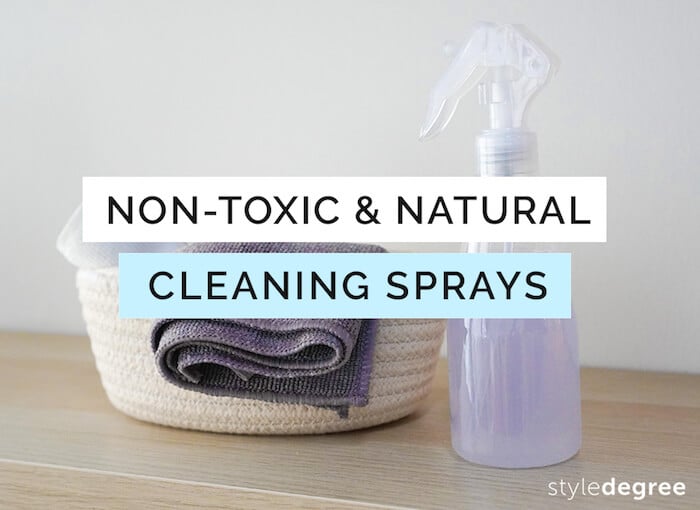In a bid to ensure crop yields are plentiful, pesticides are often used in the growing of fruits and vegetables to keep pests or weeds away.
But if you currently live in Singapore, you’ll be happy to know that use of pesticides in local agricultural farms is regulated by the Singapore Food Agency (SFA)!
In addition, the SFA also diligently samples imported vegetables and fruits to weed out those with high pesticide levels. Those that fail to make the cut are also not allowed to be sold, such as with the 2018 case of Pasar and Iceberg lettuce being recalled for high levels of pesticide.
Nevertheless, there’s still value in keeping pesticide levels as low as possible on our consumables. Before we go into detail on what we can do to minimise risk at home, let’s clear up some common misconceptions about pesticides!
Misconception 1:
Organic fruits & vegetables are completely free from pesticides

Image source: Phys.org
The harsh truth is, it’s often not true that organic fruits and vegetables are completely free from pesticides. Organic farming does involve pesticide-use, but the only difference is that these pesticides are derived from natural sources and are hence only lightly processed before use.
Even if produce is touted to be ‘pesticide-free’, cross contamination across different crops does occur as well, where pesticides from another crop leaves residue on the ‘pesticide-free’ ones.
Also check out on StyleMag: 15 Foods That Don’t Have To Be Refrigerated
Misconception 2:
Commercial vegetable cleaners are highly effective in removing pesticides
This is unfortunately a falsehood as commercial vegetable cleaners are just about as good as using tap water to rinse off fruits and vegetables. This was proven in a study conducted by researchers from the Connecticut Agricultural Experiment Station, the first agricultural experiment station in the United States.
In addition, the SFA (formerly AVA) also mentioned that there has been no international consensus on the effectiveness of commercial products, despite their claim to be specially designed as a pesticide wash.
Conclusion? Don’t waste your money and just use tap water or other more natural cleaning methods, as we’ll teach you down below!
Also check out on StyleMag: 6 Non-Toxic & Natural Cleaning Sprays You Can Easily Make At Home
Note: The National Pesticide Information Center has warned against dishwashing soap or bleach as a cleaner. These chemicals are easily trapped in the pores of fruits and veggies and can be difficult to rinse off, leaving residues in consumption.
Proper Ways To Remove Pesticides On Fruits & Veggies
1. Soak & scrub in water
1.1 Soaking with cold water
Researchers from the Connecticut Agricultural Experiment Station found that giving fruits and vegetables a rinse under cold water effectively reduces pesticide residues for 9 of the 12 pesticides involved in their study.
Their advice? Give your produce a minimum 30-second rinse under cold tap water to get it ready for consumption. You should do this with soft foods like berries, peaches and nectarines to prevent them becoming soggy and gross.
According to the SFA, performing the following actions will aid in removing pesticide residue from vegetables.
- Rinse the veggies for 30 seconds.
- Soak them for 15 minutes in a clean bowl to prevent contamination from bacteria from the sink.
- Give the vegetables a final rinse to remove any pesticide residue.
Browse our range of Colanders here to give your fruits and veggies a good soak to remove pesticides!
Tip: Remove dirt residue from root vegetables (e.g. carrots & potatoes) by scrubbing them before performing the steps above.
1.2 Soaking in warm water
The thicker skins of citrus fruits are typically sprayed with a thin layer of wax after harvesting. This gives them their glossy glow and helps protect them while they’re being transported.
Use a 10-minute warm water soak to melt waxy protective layers on citrus fruits, like oranges and lemons before consuming.
2. Soak in vinegar
A common household ingredient, acetic acid found in vinegar aids in killing bacteria on your fruits and veggies and is useful in dissolving pesticide chemicals on their skins!
To use vinegar as a pesticide remover, here’s what you do.
- In a large bowl, combine water and plain white vinegar in a 4:1 ratio.
- Soak the fruit or vegetables you want to clean for 20 minutes.
- After draining in a colander, give them a good rinse with water to remove excess vinegar.
3. Treat with baking soda
Researchers at University of Massachusetts have found that soaking apples in a solution of baking soda and water is an effective way to remove dirt and kill harmful microbes. Within 12 to 15 minutes of soaking, the baking soda completely got rid of the pesticides used in their study.
They recommend consumers to soak fruits or vegetables in a solution of one teaspoon of baking soda and two cups of water for 2 minutes or more.
What’s the waxy white layer on my fruits?

Image source: The Succulent Eclectic
If you’re fond of fruits like plums, blueberries or grapes, you might have noticed that sometimes they develop white spots.
The white film, which is actually called ‘bloom’, is perfectly safe for consumption and develops to protect the fruit from loss of moisture or decay. In fact, almost all fruits do have a layer of waxy bloom on it, but it just appears most prominently on darker skinned fruits!
If you’re struggling to clean wax off each individual tiny grape, here’s a solution for you.
- Sprinkle 1 to 2 teaspoons of both baking soda and salt over your grapes.
- Shake them in a bowl for a minute for the baking soda and salt to gently scrub the residue off your grapes.
- Soak them in water for 15 minutes, followed by a 30-second rinse with cold water
As berries are delicate fruits, it is recommended that you consume after washing to retain its freshness. Store berries in our Garnish Mini Food Container to drain excess water while snacking on your sweet berries.
4. Peel & remove outer layers
In response to queries by The Straits Times, the Singapore Food Agency has been quoted as saying:
‘’As a good food safety practice, consumers are advised to wash fruits with edible skins (for example: apples, pears) thoroughly before consumption. Peeling is also effective for eliminating pesticide residues as most of the residues reside on the surface of fruits.’’
So what are you waiting for? Time to bust out that peeler and get to work on those fruits and veggies!
While fruits and vegetables in Singapore are very well regulated and monitored, there’s no harm in going the extra mile to keep foods safe and clean for you and your loved ones!
Let us know in the comments down below which methods you’ll be trying out at home.
Enjoyed this post? Join us on Instagram @style_degree, Facebook and Telegram @HomeownersSG, where we share the best home organization tips and cleaning hacks to help you embark on an organized and happier homeowner life! P.S You’ll be the first to learn about our latest product launches there too.










